If you love how Frase turns SERPs into outlines, briefs, and optimization guidance, but you’re wondering whether there’s a better fit for your team’s workflow, seat model, or budget- you’re in the right place.
In this guide, we break down 12 credible Frase alternatives across three buckets:
- Editor-first optimizers
- Full SEO suites with content modules
- And AI-writing platforms you can pair with an optimizer
You’ll see where each tool shines (brief quality, scoring depth, monitoring, or suite consolidation), how they scale with team size and content velocity, and what trade-offs look like in real workflows, grounded in playbooks like our SaaS content audit framework and real-world outcomes from AI overview for BOFU SEO.
👉 To help you assemble the writing component, we also compare AI drafting options in best Jasper alternatives so you can pair the right writer with your optimizer.
Table of Contents
The Best Frase Alternatives (2025): SEO Tools Compared for Teams & Workflows
Twelve options - some direct competitors, others great complements. Each summary explains where it shines, how it fits into a stack, and when to choose it.
| Tool | Best for | Rating |
|---|---|---|
| Surfer | Editor-first optimizer, briefs + on-page tune-ups | 4.8/5 |
| Clearscope | Consistent briefs & uniform QA across teams | 4.9/5 |
| MarketMuse | Topic mapping & inventory-led strategy | 4.6/5 |
| NeuronWriter | Value-focused optimizer with AI drafting | 4.4/5 |
| WriterZen | Keyword/topic research + editor combo | 4.7/5 |
| Scalenut | All-in-one AI writer + content editor | 4.7/5 |
| Outranking | Brief→draft workflow with SERP analysis | 4.5/5 |
| SE Ranking (with Content Marketing add-on) | One-vendor suite (ranks, audits, editor) | 4.8/5 |
| Semrush (incl. SEO Writing Assistant) | Enterprise-friendly all-in-one | 4.5/5 |
| Dashword | Simple monitoring + content editor | No official G2/Capterra aggregate rating published (Capterra listing exists in some regions without star roll-up) Capterra |
| PageOptimizer Pro (POP) | Prescriptive on-page testing | 4.9/5 |
| GrowthBar | AI-assisted drafting + basic SEO | 4.8/5 |
1) Surfer SEO — writer-friendly editor with strong audits
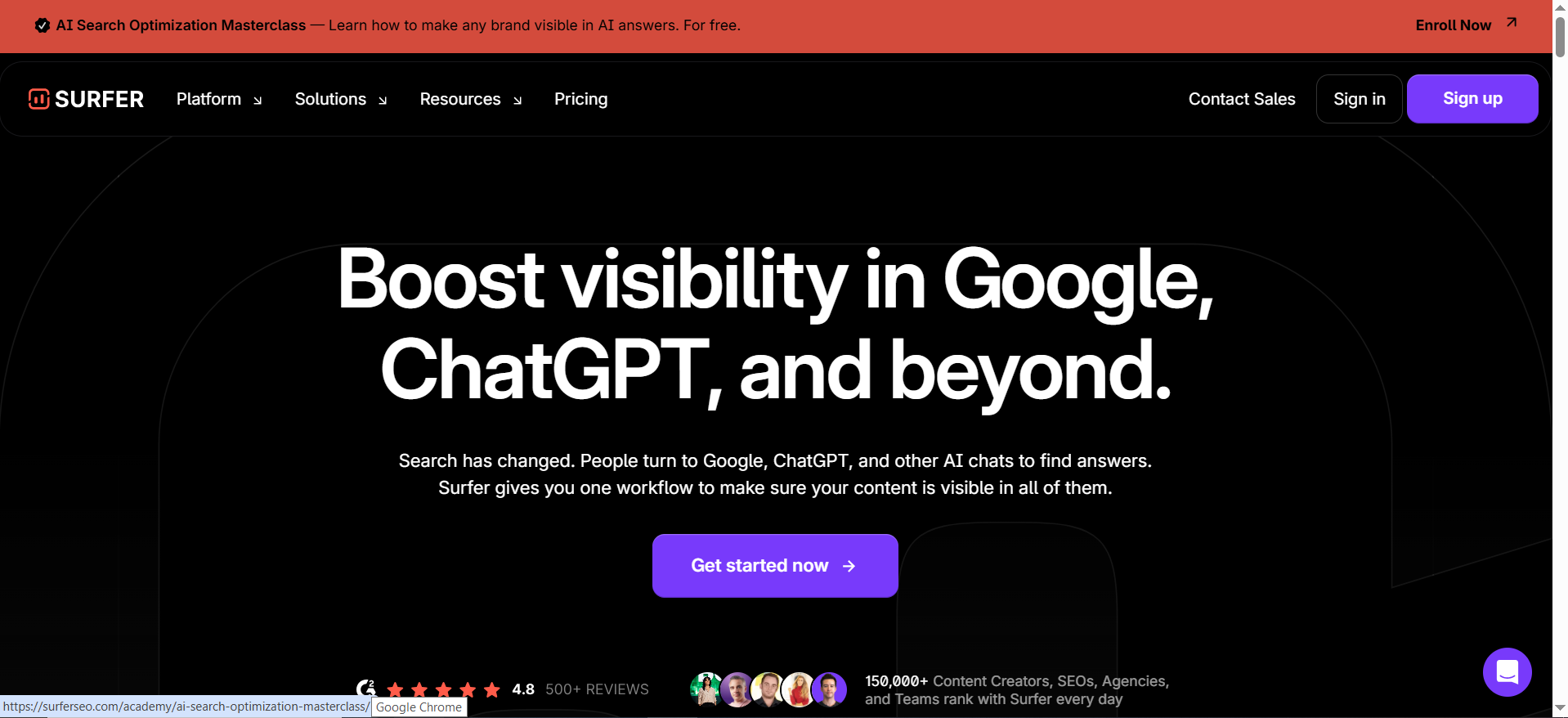
Surfer is a content editor and audit tool that reverse-engineers top SERP results to suggest headings, terms, and structure. Great for writers who want clear, prescriptive on-page guidance.
At a glance: clear editor scoring; practical audit refreshes; costs can rise with high volume.
How it compares to FraseFrase leans into briefs and SERP-driven outlines; Surfer shines for editor scoring + audits. If your bottleneck is keeping a large library optimized, Surfer may fit better.
Key features
- Content Editor with NLP suggestions and structure guidance
- Content Audit to refresh existing pages
- Integrations (e.g., Google Docs) and team usage via credits
Pros
- Intuitive editor and scoring writers actually use
- Practical audit workflows for refreshes
- Mature templates and ecosystem
Cons
- Credit limits can feel tight for high-volume teams
- Costs rise as you scale
Best forContent teams that want a writer-first editor with clear optimization cues and periodic audits.
2) Clearscope — premium NLP scoring and inventory tracking
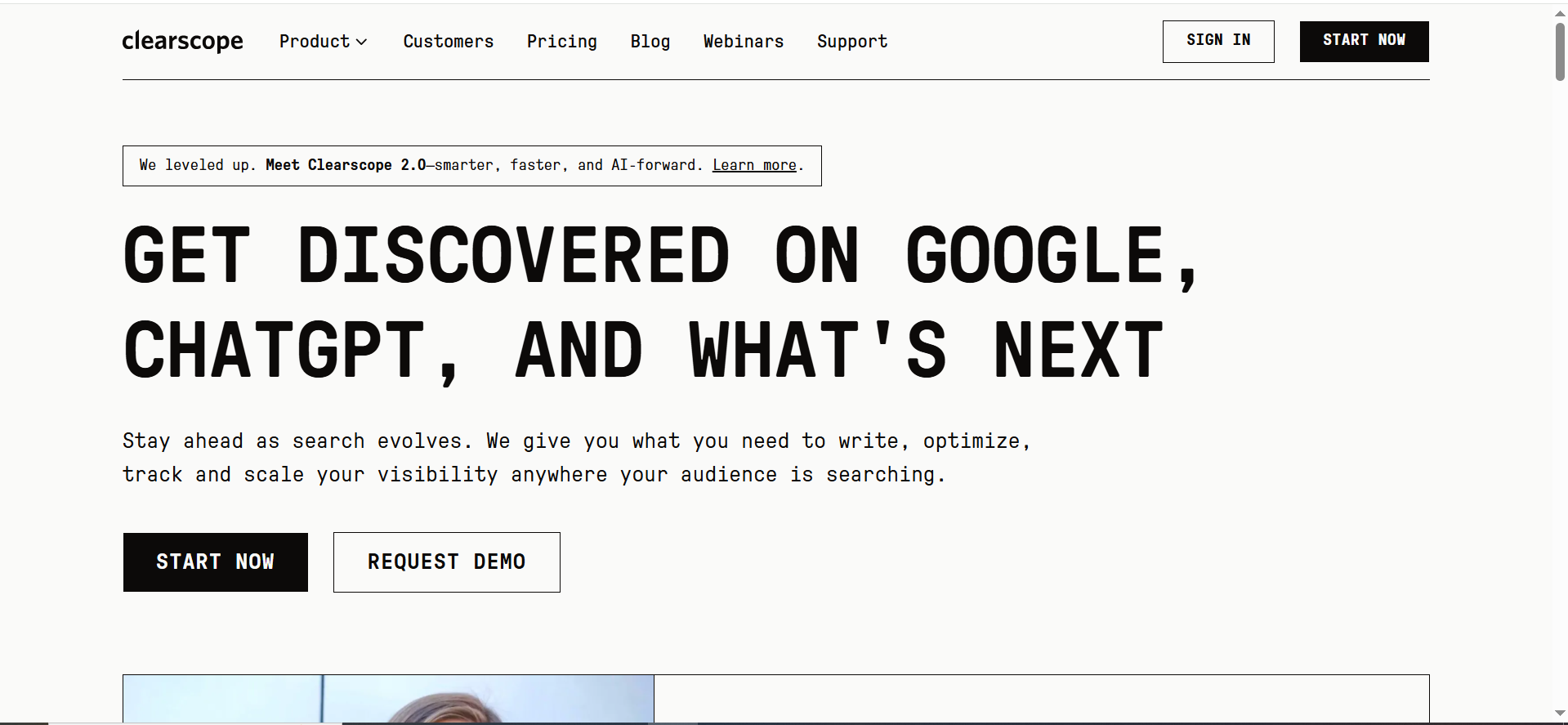
Clearscope provides high-trust NLP term suggestions and a clean grading system. It’s built for teams that need consistent writer output and simple adoption across large content libraries.
At a glance: high-trust scoring; inventory view for prioritization; premium pricing, pair with a suite.
How it compares to FraseFrase offers research-to-brief speed; Clearscope provides grade consistency and inventory governance at scale.
Key features
- NLP-driven recommendations and grades
- Content Inventory for prioritization
- Google Docs integration
Pros
- Excellent, trusted scoring
- Writer-friendly experience
- Inventory view helps managers enforce standards
Cons
- Premium price point
- Less of a “full SEO suite”—pair with your tracker/auditor
Best forTeams with multiple writers who need consistent quality and a common score target.
3) MarketMuse — topic modeling and strategic content inventory
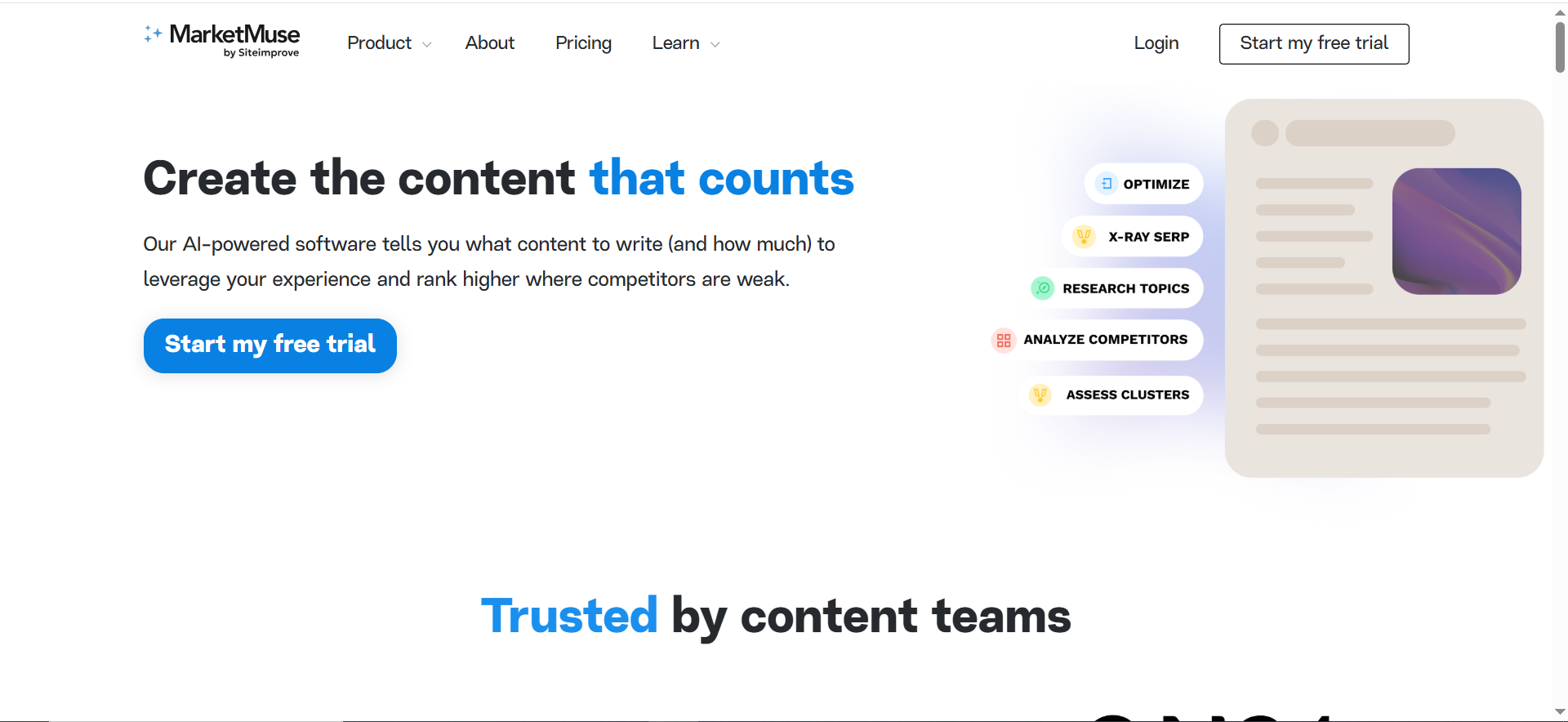
MarketMuse goes beyond page editing to map topics, find gaps, and prioritize what to produce next. Ideal when you’re building clusters and long-term topical authority.
At a glance: deep topic modeling; roadmap for clusters; steeper learning curve.
How it compares to FraseFrase is faster from query to brief; MarketMuse adds inventory intelligence and topic depth for long-term authority.
Key features
- Topic research, competitive coverage, and opportunity detection
- Content briefs + Optimize editor
- Inventory to prioritize content creation and updates
Pros
- Deep topic modeling
- Excellent for cluster planning and roadmaps
Cons
- Learning curve and process change
- Can be pricier as you scale briefs/queries
Best forStrategists and editors building topic clusters and authority plans, not just one-offs.
4) NeuronWriter — budget-friendly editor + AI writing
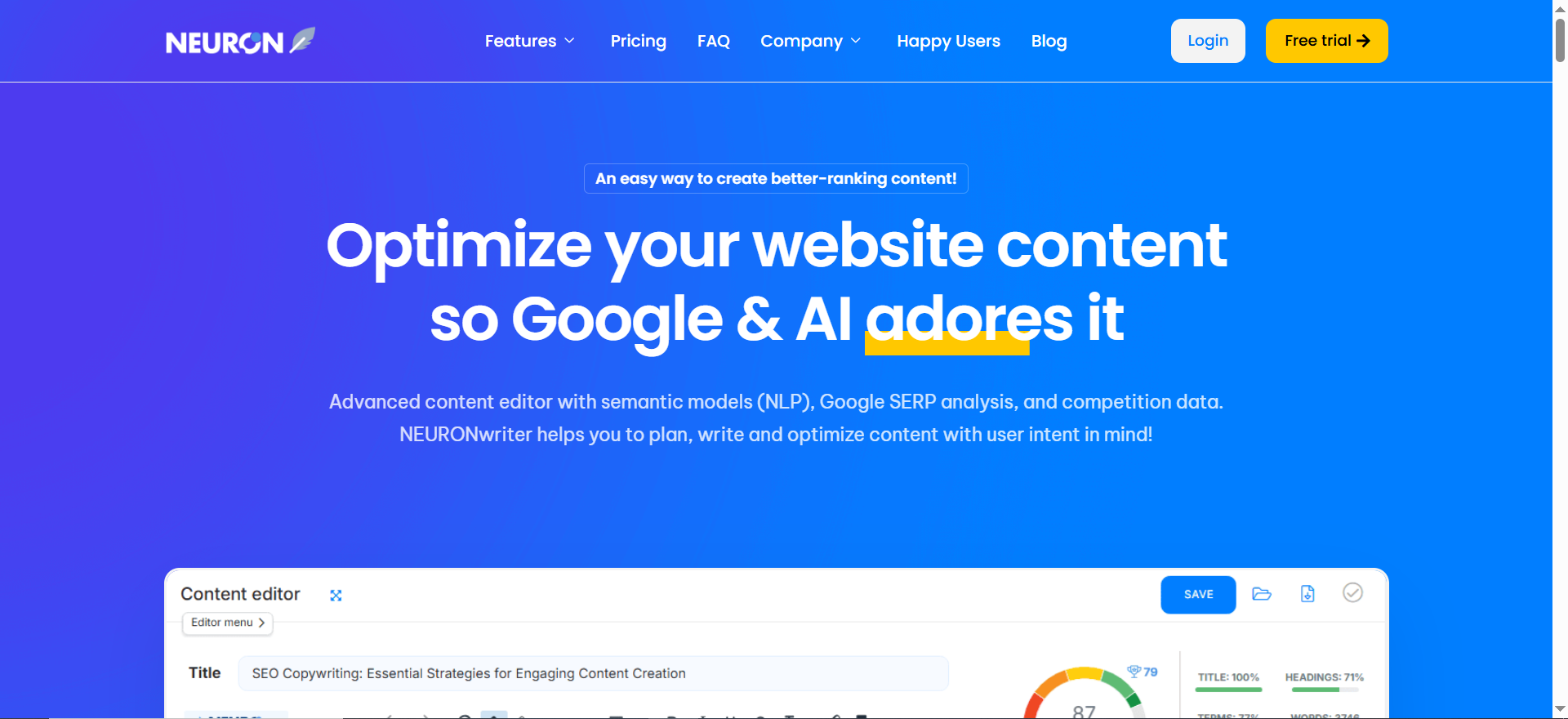
NeuronWriter combines SERP analysis with a practical editor and AI drafting at a value price point. A smart pick for freelancers and lean teams scaling production.
At a glance: strong price/value; easy adoption; UI/data depth trails premium tools.
How it compares to FraseA similar “editor + AI” flow, often at a lower price per analysis.
Key features
- Content Editor with NLP terms
- AI templates/one-click drafts
- Integrations: GSC, WordPress, Shopify
- Plagiarism checks on higher tiers
Pros
- Strong price-to-analysis value
- Easy to adopt for freelancers/SMBs
Cons
- UI/data depth lags premium tools
- Support and documentation vary by plan
Best forSolo creators, boutique agencies, and SMBs seeking capable optimization at lower cost.
5) WriterZen — keyword discovery + clustering with basic optimization
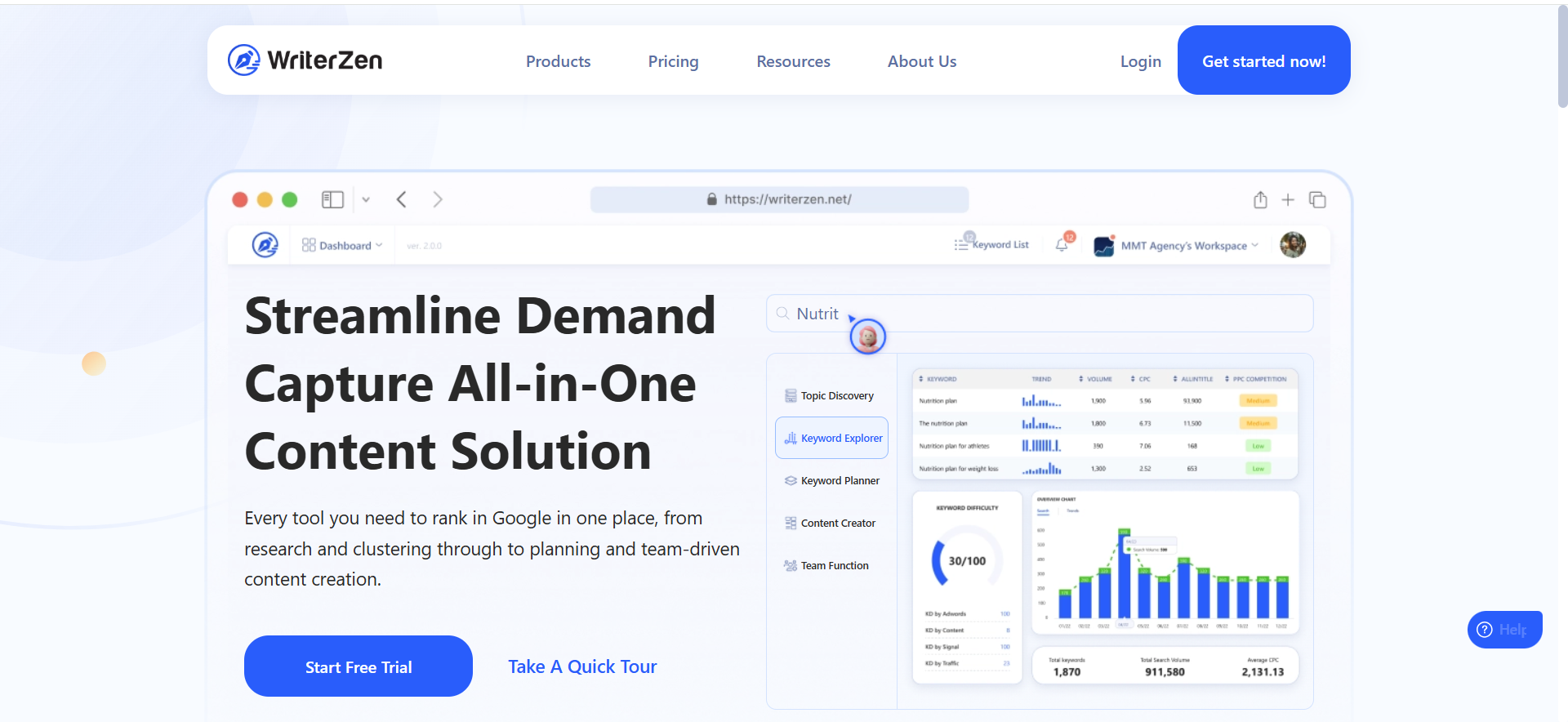
WriterZen specializes in keyword discovery and clustering to shape your content roadmap. Use it upstream to choose winning topics, then optimize in your editor of choice.
At a glance: sharp clustering; budget-friendly research; lighter on in-editor optimization.
How it compares to FraseFrase focuses on brief-to-editor; WriterZen shines earlier in the pipeline (topic selection + clustering).
Key features
- Keyword discovery and topical clustering
- AI writing templates
- Plagiarism checks on higher tiers
Pros
- Sharp clustering for planning
- Budget-friendly for research-heavy workflows
Cons
- Optimization depth trails premium editors
- UI can feel busy
Best forTeams that want topic/keyword planning and will pair it with a stronger editor (e.g., Surfer/Clearscope).
6) Scalenut — AI writer + optimizer with “AI crawlability” focus
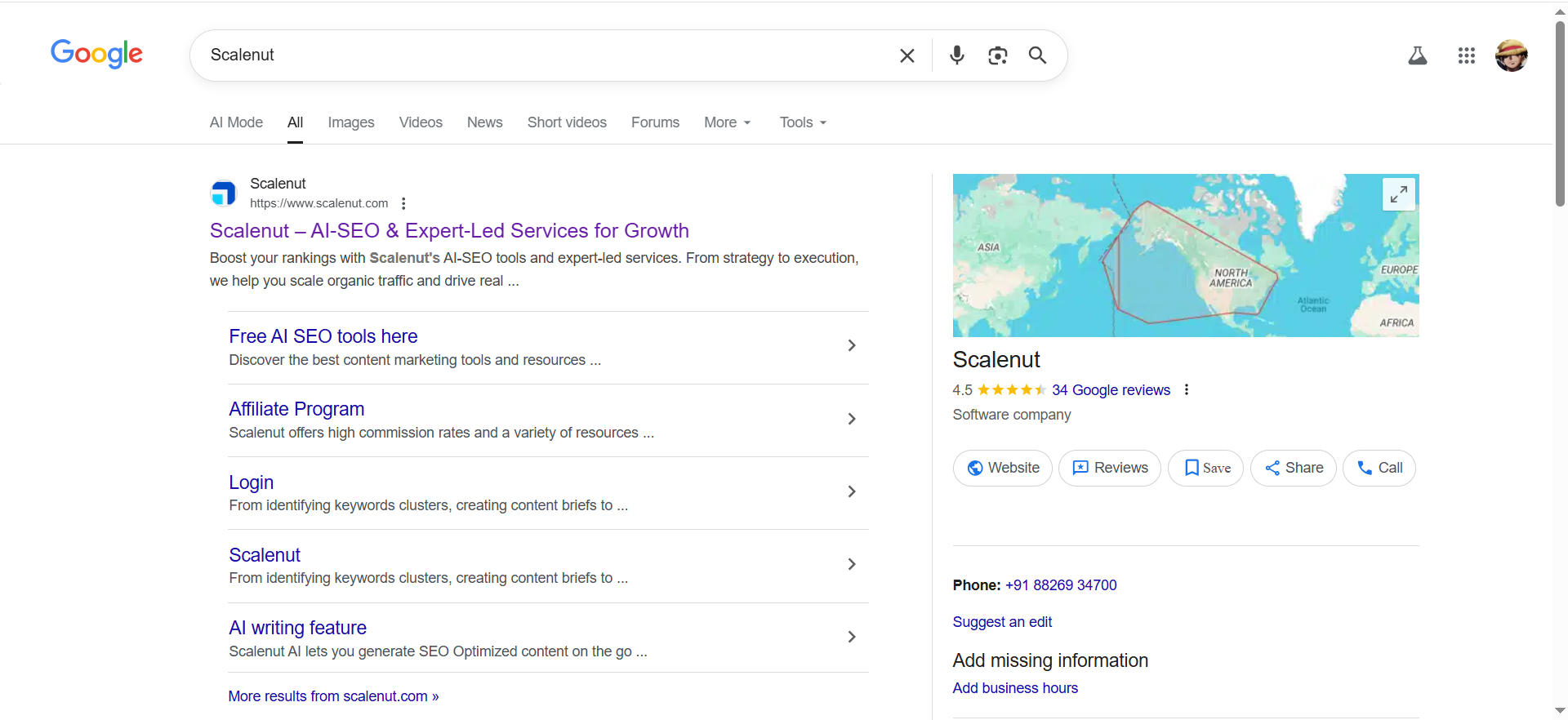
Scalenut streamlines research → brief → AI draft → optimization, with extra attention on structured, “AI-readable” content. A solid all-in-one for SMBs and agencies.
At a glance: full workflow coverage; accessible pricing; first drafts still need human polish.
How it compares to FraseVery similar remit; Scalenut emphasizes crawlable structure for AI/answer engines.
Key features
- Content Optimizer and SERP-driven outlines
- AI drafting and briefs
- Guidance to improve AI crawlability and structure
Pros
- Full workflow (research→brief→draft→optimize)
- Accessible pricing for SMBs
Cons
- Data depth behind premium suites
- First drafts still need human editing
Best forSMBs and agencies that want one tool to cover most steps at moderate cost.
7) Outranking — SERP-informed first drafts + internal linking
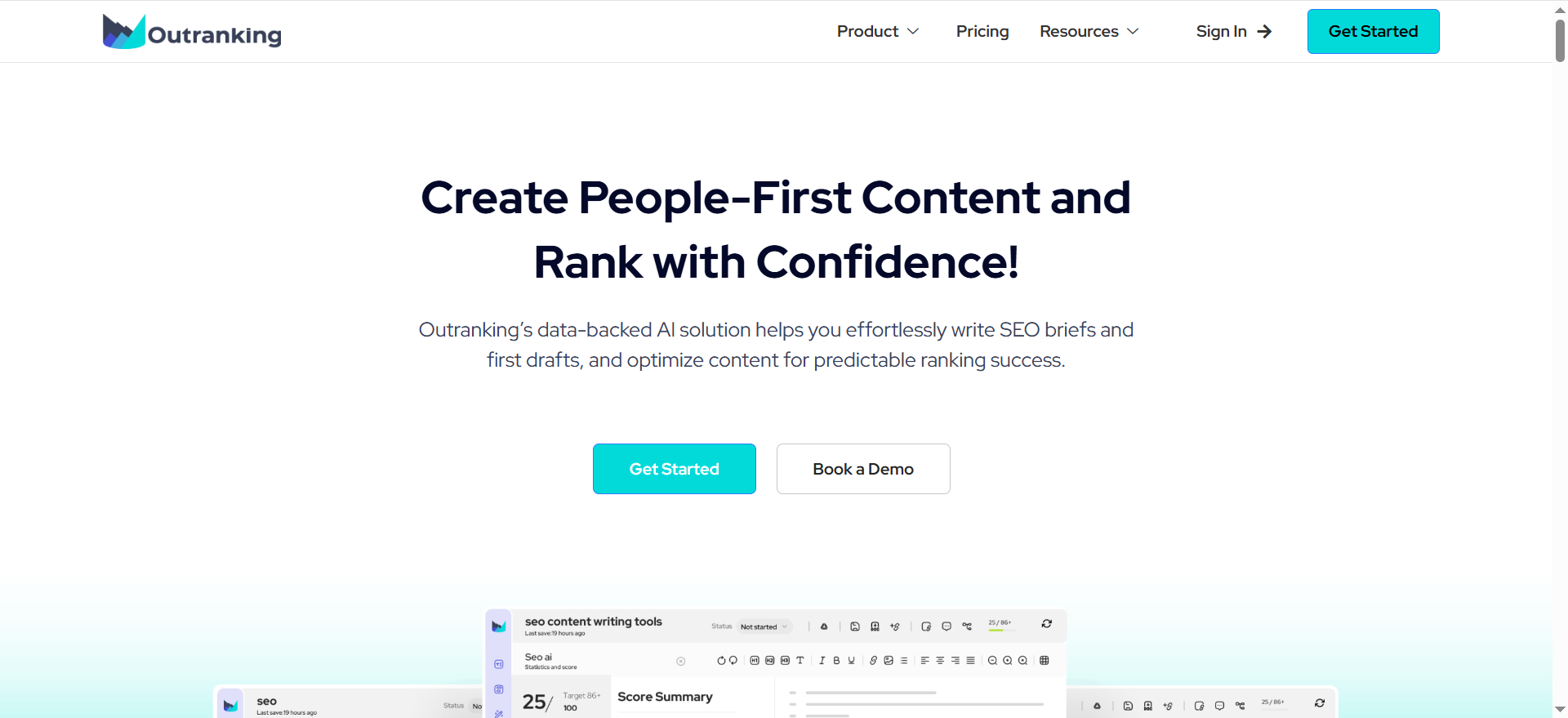
Outranking turns SERP research into structured AI drafts and automates internal link suggestions. Helpful when speed to first draft and sitewide linking are priorities.
At a glance: quick research→draft; internal linking automation; interface can feel dense at first.
How it compares to FraseComparable SERP-to-draft flow; internal linking automation can reduce manual work.
Key features
- SERP-informed AI drafts
- Internal linking automation
- Briefs and multi-doc optimization
Pros
- Rapid research→draft turnaround
- Built-in internal linking suggestions
Cons
- UI can feel complex at first
- Human QA still essential for voice/facts
Best forTeams producing lots of first drafts quickly, then refining.
8) SE Ranking (Content Editor add-on) — suite consolidation with a capable editor
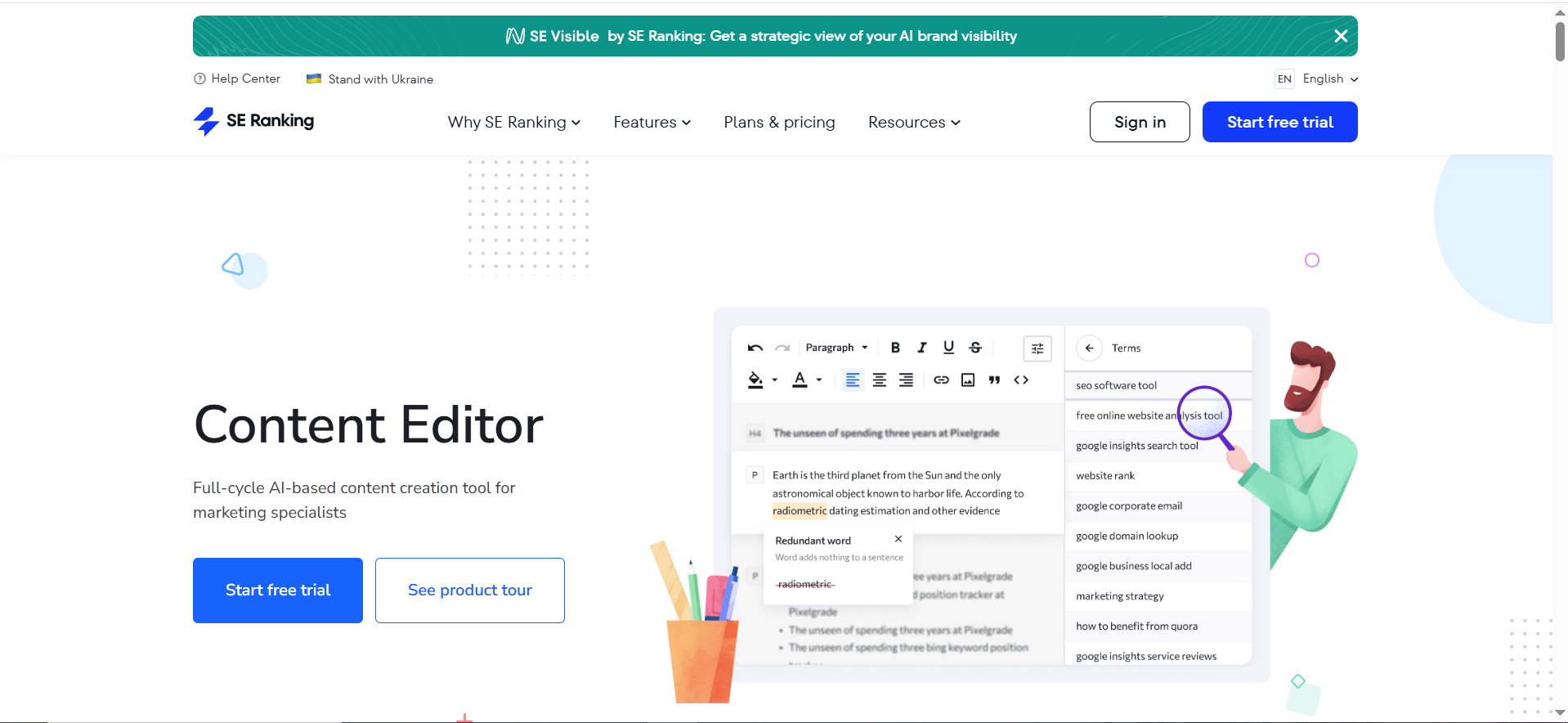
SE Ranking is a full SEO suite; its Content Editor add-on brings briefs, keyword suggestions, and scoring into the same platform you use for tracking, audits, and research.
At a glance: single vendor; good-but-not-specialist editor depth; add-on billed atop base plan.
How it compares to FraseFrase is a focused content platform; SE Ranking gives you a single pane of glass for SEO + content.
Key features
- Brief generator, keyword suggestions, Content Score
- Google Docs extension for collaboration
- Lives inside a broader SEO platform (rank tracking, research, auditing)
Pros
- One vendor for tracking + content workflows
- Clear content scoring; collaborative Docs workflow
Cons
- Editor is good, but not as granular as top specialists
- Add-on sits on top of the base plan
Best forTeams that prefer suite consolidation over best-of-breed stitching.
9) Semrush (SEO Writing Assistant) — in-editor guidance if you’re already on Semrush
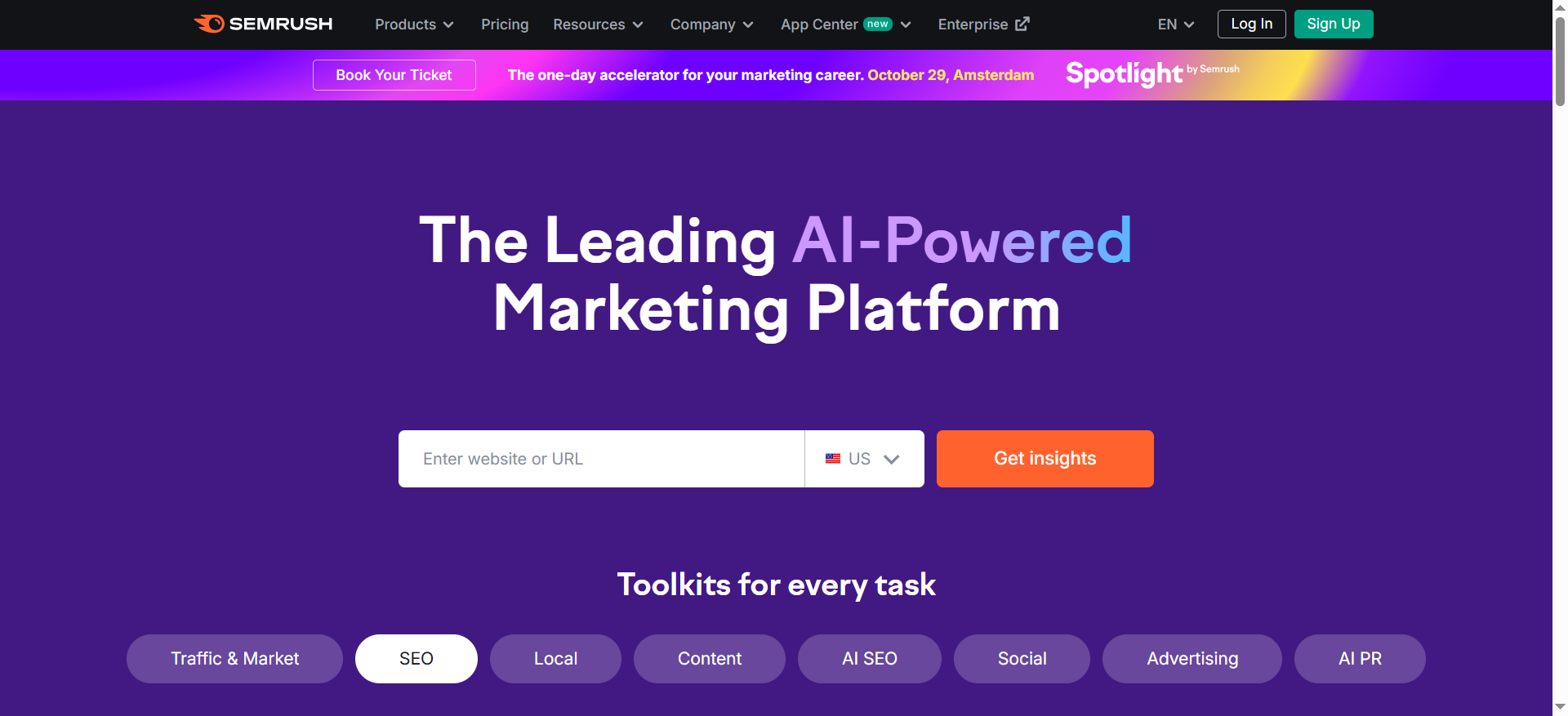
Semrush’s SEO Writing Assistant runs inside Google Docs/WordPress to nudge readability, tone, and SEO basics. Best as a convenient overlay if you already use Semrush.
At a glance: low-friction if you have Semrush; fewer competitive NLP signals; handy for convenience.
How it compares to FraseFrase = research + brief + editor; SWA is a lightweight overlay tied to your Semrush data.
Key features
- Real-time suggestions inside Docs/WP
- Hooks into Semrush keywords and Content Marketing toolkit
- Plagiarism and tone checks on higher tiers
Pros
- Low-friction add if you already pay for Semrush
- Keeps writers inside their normal editor
Cons
- Fewer competitive NLP signals than premium editors
- Requires a Semrush plan (not a cheap standalone)
Best forTeams already in Semrush who need “good-enough” in-editor guidance without another vendor.
10) Dashword — lightweight optimizer with refresh monitoring
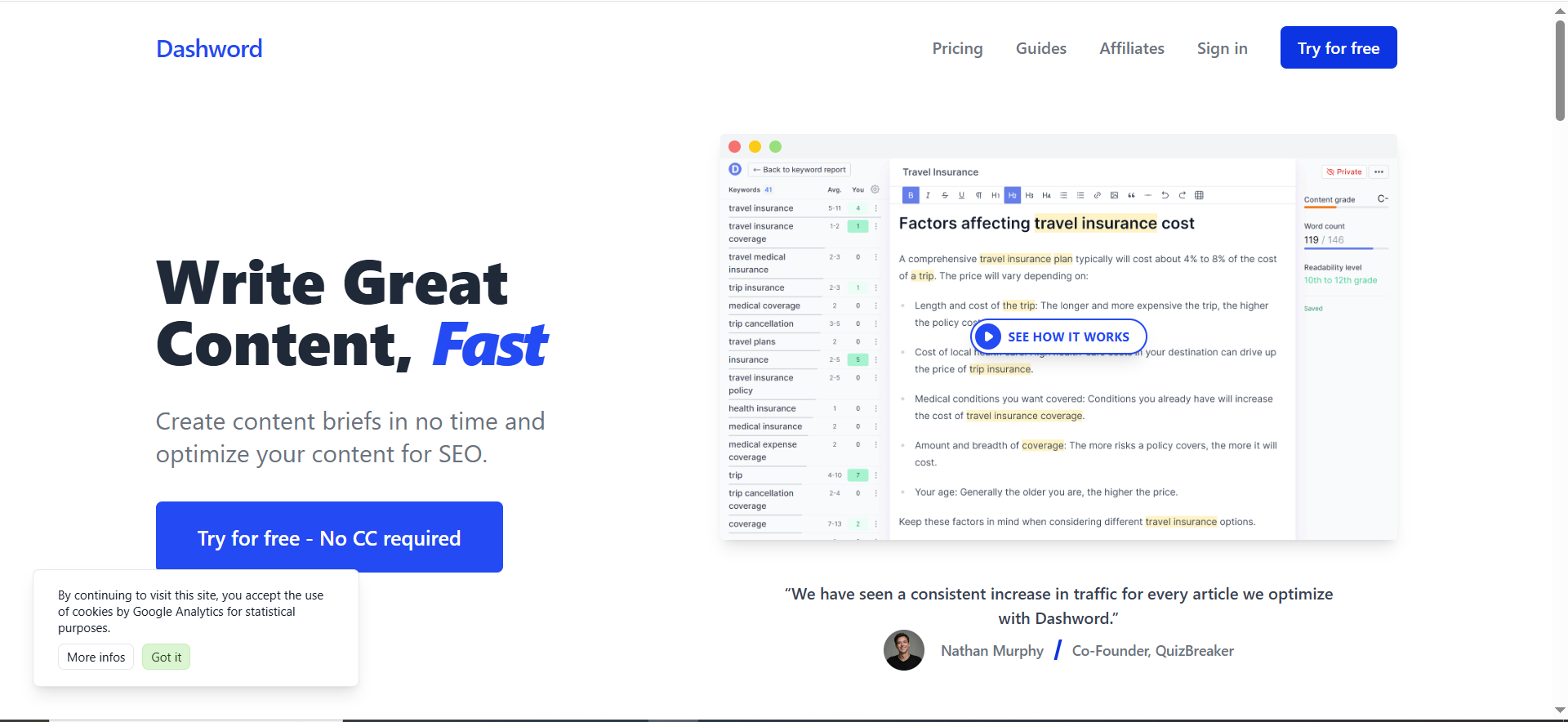
Dashword offers straightforward briefs/optimization plus content monitoring to flag pages that need updates, handy for keeping evergreen posts performing.
At a glance: easy adoption; great for refresh cadences; lighter feature set overall.
How it compares to FraseFrase prioritizes briefs/editing; Dashword adds proactive monitoring to keep libraries fresh.
Key features
- Content briefs + optimization
- Monitoring for decay/updates
- Google Docs add-on
Pros
- Easy to adopt
- Monitoring is great for systematic refreshes
Cons
- Fewer features than larger suites
- Plan details and limits vary by source—double-check
Best forTeams focused on maintenance and refresh cadences for compounding gains.
11) PageOptimizer Pro (POP) — prescriptive on-page testing
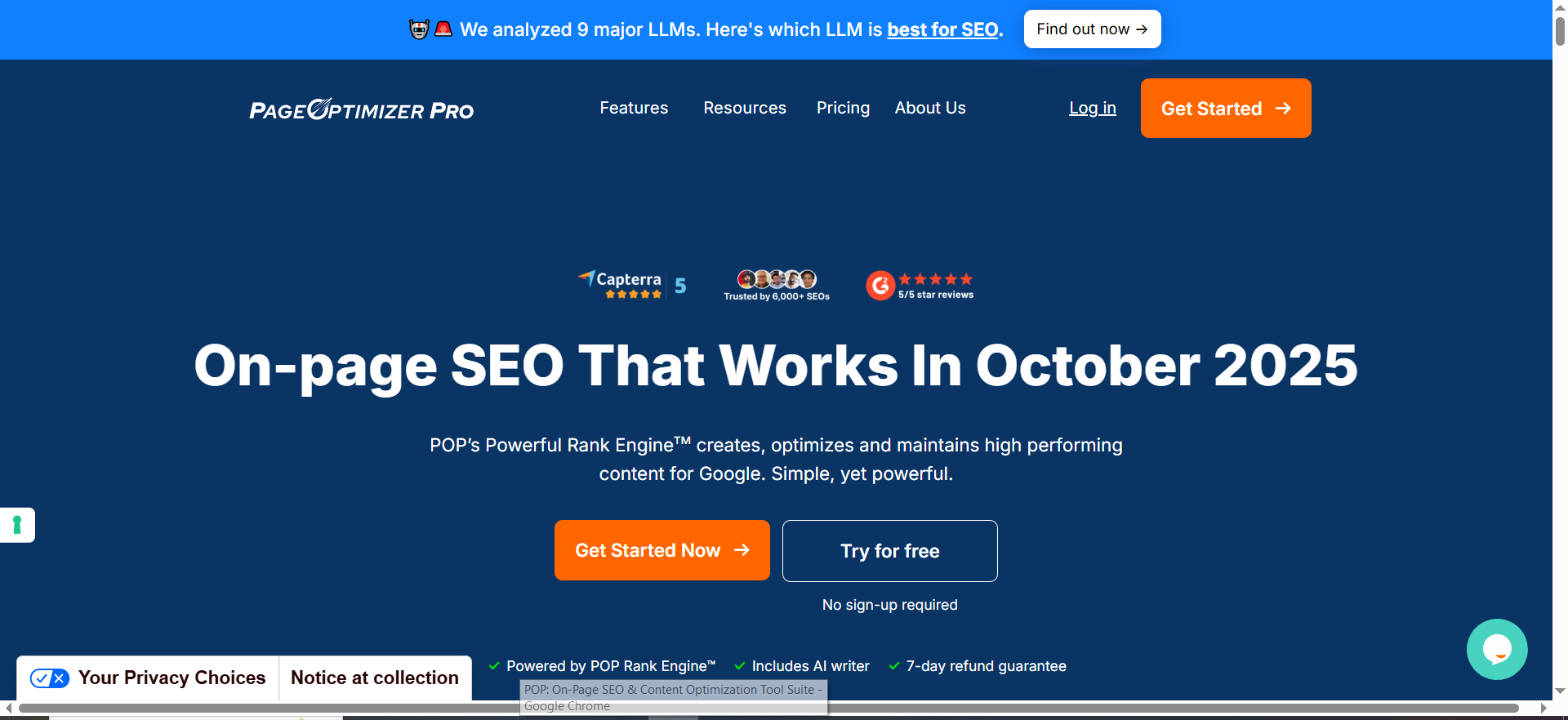
POP focuses on tactical on-page wins, prescribing exactly what to add or adjust on a URL. Perfect for moving plateaued pages with measurable, test-driven changes.
At a glance: precise, experiment-friendly guidance; utilitarian UI; best for advanced hands-on users.
How it compares to FraseFrase = research and content production; POP = surgical on-page adjustments post-publish.
Key features
- POP Rank Engine™ with prescriptive guidance
- POP AI Writer
- Useful for single-URL experiments and stubborn pages
Pros
- Precise, test-friendly recommendations
- Loved by hands-on SEOs who want control
Cons
- Not a full brief+AI suite
- Utilitarian UI
Best forAdvanced users running on-page experiments or trying to move plateaued URLs.12)
12) GrowthBar — AI drafting for blogs with basic SEO
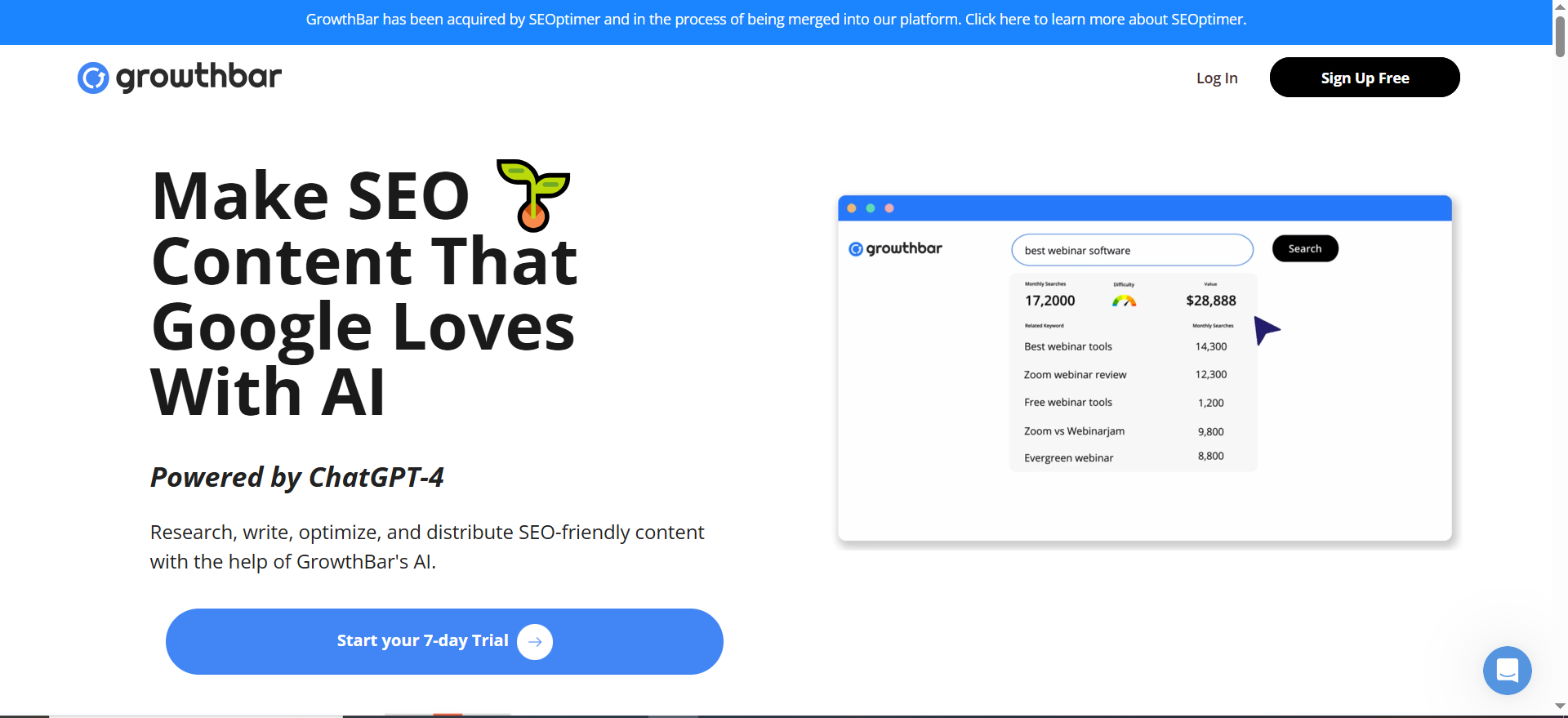
GrowthBar helps bloggers and small teams generate outlines and AI drafts with light SEO prompts. It favors speed and simplicity over heavy analysis.
At a glance: friendly UI; good value when discounted; lighter reporting and data depth.
Key features
- AI blog outlines and drafts
- Content editor with SEO prompts
- Lightweight rank/keyword features
Pros
- Friendly UI for small teams
- Good value when discounted
Cons
- Data depth trails premium suites
- Reporting/monitoring is light
Best forBlog-led growth where fast drafting and acceptable optimization are the priority.
Why Do Teams Look for Frase Alternatives?
Frase is great for solo writers and small teams. Bigger, growth-focused teams often need features Frase doesn’t cover well, so they look elsewhere.
What Frase doesn’t fully solve
- Team size & pricing: Needs more seats or different credit models for larger teams—plus ongoing ops like best SEO rank tracking tools to monitor outcomes beyond the brief.
- Deeper scoring: Wants stronger NLP/“content quality” scoring and topic coverage checks, often validated by a B2B SaaS content audit checklist.
- All-in-one suite: Prefers one vendor for rank tracking, site audits, and link tracking instead of juggling tools.
- Ongoing monitoring: Needs alerts for content decay and tools for on-page tests after the brief is done.
- Process fit: Wants a documented cadence (e.g., monthly audits + weekly rank checks) baked into the tool.
What we evaluate in “Frase alternatives”
- Editing workflow (brief → draft → optimize)
- Topic/entity coverage and scoring depth
- Rank tracking and content-decay alerts
- Site audits and link tracking in the same place
- Clear testing/playbooks for ongoing on-page improvements
- How well the tool helps you win AI Overview placements (see our BOFU case study)
Ultra-concise TL;DR
Frase nails briefs and drafting, but bigger teams need suites that add rank tracking, audits, monitoring, deeper NLP scoring, and structured content blocks that AIs can quote. Choose tools that support ongoing optimization “not just drafting” so you can win in blue links and AI results.
Choosing the Right Frase Competitor: Five Decision Filters
Here are the five decision filters: volume/velocity, QA rigor, strategy/topical authority, suite vs. specialist, and budget/procurement. Score each contender against these, then pick the stack that fits now and scales.
1) Volume & seats — how many briefs and writers?
Start by checking how credits, documents, and seats are billed.
Surfer and Clearscope typically run on credit systems, SE Ranking’s content add-on introduces article caps per month, and value-oriented tools like NeuronWriter and Scalenut usually offer more analyses per dollar.
If you manage lots of briefs or multiple writers, these pricing mechanics can swing the decision more than features, so shortlist with an SEO rank tracking software comparison to see operational limits alongside pricing.
2) Brief quality versus on-page precision
Match the tool to your bottleneck. If the hardest part is getting writers aligned with clear briefs, choose Clearscope, Surfer, Scalenut, or Outranking.
If the priority is extracting incremental gains from pages that already exist, POP’s prescriptive, test-style recommendations tend to deliver measurable post-publish improvements, ideally anchored to a B2B SaaS content audit checklist so your fixes roll up into a repeatable workflow.
3) Consolidation versus best-of-breed
Some organizations want one vendor for procurement and security reasons. In that case, SE Ranking with its Content Editor or Semrush paired with SWA keeps everything centralized.
If performance is the north star and you can manage a split stack, combine a best-in-class editor with your preferred AI writer and map tools with an ROI-first SEO tool stack for SaaS to avoid overlap and gaps.
4) Monitoring & refresh cadence
If most growth comes from refreshing what you’ve already published, prioritize tools that help you monitor decay and cue refreshes.
Dashword includes monitoring so you can spot declines, or you can add a lightweight process to review key posts every 30–60 days and trigger a brief when metrics slip, guided by your audit framework and what your SEO rank tracking software comparison flags as losing ground.
5) Budget certainty
Avoid surprises by being explicit about how charges accrue. Understand whether you’re paying by credits, documents, or seats, and how those limits reset.
Dashword and NeuronWriter tend to be forgiving on cost per report, while premium options justify higher prices with polished UX, reliable recommendations, and stronger support.
Use a finance-friendly framing with this series A SaaS content budget guide to align procurement on ROI and runway.
AI-First SEO: What Your Content Tool Must Do (2025)
Why this matters
Search snippets and AI answer engines now surface short, self-contained answers. To win visibility, every page needs scannable sections that can stand alone and be cited. Our SOP: 100–200-word answers under query-shaped H2/H3s, with citations and key entities covered to build trust, guided by SEO strategies using AI visibility tools that align content blocks to how AI overviews are assembled.
What to look for in a tool
- Writing UX that nudges best practice: Prompts for entities, headings, and internal links help standardize output.
- Freshness controls: Inventory or monitoring so owners get alerts to update aging pages, shortlist options from our AI content audit software roundup to catch decay early.
- Frictionless adoption: One-click send to Google Docs/Word/WordPress reduces handoff friction.
- Quality targets: Clear content scores so editors can enforce consistency against entity and coverage goals.
Where AI fits
- Research & outlining: Use ChatGPT/Perplexity/Gemini to explore the topic, users’ queries, and SERP patterns.
- Optimization & QA: Use SEO optimization tools to confirm the draft matches SERP intent, on-page standards, and entity coverage, then operationalize updates via a SaaS content audit & fix sprint when pages need structured refreshes.
- Pair them: AI for speed, optimizer for rigor.
Quick Playbooks for Picking an SEO Content Stack
Below are quick playbooks that match common scenarios so you can choose confidently and start shipping.
1) Solo creator or small agency on a budget
You want fast drafts, sensible SEO guidance, and low costs. A practical core is NeuronWriter or Scalenut, both combine an editor with AI drafting so your first pass already considers on-page SEO.
For the budget piece, shortlist stack essentials with our best free SEO tools so you’re not paying for features you won’t use.
If you have a few mission-critical URLs, layer POP (PageOptimizer Pro) for extra on-page experiments and fine-tuning. This combo keeps spend down while giving you clear recommendations and speed.
Starter stack: NeuronWriter + POP for your top pages.
2) In-house content team with multiple writers and strict QA
Your aim is consistency: identical brief structure, uniform scoring, and simple QA at scale. Choose Clearscope or Surfer as the anchor; they provide standardized guidance that aligns writers and makes editorial reviews faster.
For freshness and scheduled updates, add monitoring from an AI content audit software shortlist so decaying pages cue timely refreshes.
Starter stack: Clearscope + Dashword.
3) Strategy-led org building topical authority
You’re prioritizing topic coverage, gap analysis, and cluster planning.
Start with MarketMuse to map your inventory, surface opportunities, and plan clusters in a roadmap, then execute with your preferred editor (often Surfer or Clearscope) so drafts consistently meet optimization targets.
To avoid tool overlap and codify handoffs, map your Buying + Ops setup with a best SEO tools stack for SaaS reference and lock standards into your SOPs.
Starter stack: MarketMuse for planning → Surfer (or Clearscope) for execution.
4) “One vendor only” for procurement simplicity
You need a single contract and login with “good enough” content tooling. Go with SE Ranking plus its Content Marketing add-on, or Semrush with SWA.
You’ll centralize billing, research, rank tracking, and basic content guidance in one place. To keep finance comfortable with renewal, align on caps and resets using a series A SaaS content budget framework.
Starter stack: SE Ranking (all-in-one) with its content add-on.
Frequently Asked Questions
Clearscope and Surfer both offer writer-friendly scoring and templates that scale across teams. Add monitoring (e.g., Dashword) so content doesn’t decay unnoticed.
Choose SE Ranking with the Content Marketing add-on or Semrush with SEO Writing Assistant to consolidate rank tracking, research, and content workflows under a single subscription.
Often yes. Suites centralize rank tracking, competitor research, backlink checks, and reporting—useful as you scale or report to stakeholders.
Final Thoughts
There isn’t a universal “best” tool, only the best stack for your volume, team, and workflow.
If Frase already fits, keep it as your core and layer monitoring, an all-in-one suite, and POP for controlled tests; if you’re weighing editor swaps, see best Clearscope alternatives to compare trade-offs.
If you’re scaling and need consistency, anchor on Clearscope or Surfer and align briefs to a topical map using our SaaS blog strategy for organic leads so quality scales with strategy.
▶️ For strategy-first teams, use MarketMuse to plan clusters, then execute in your editor - when you want a custom rollout, Get in touch with The Rank Masters for a custom plan.





